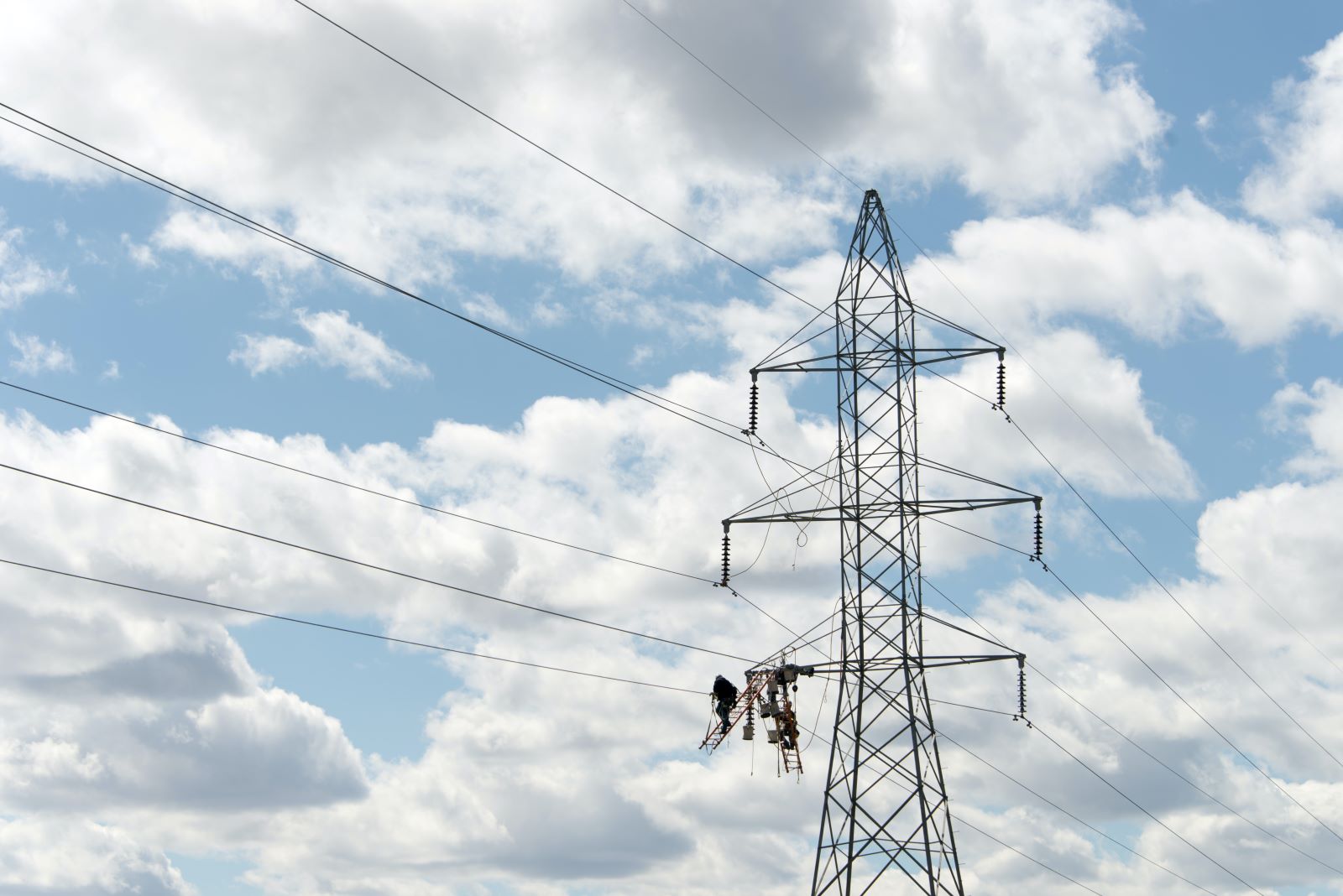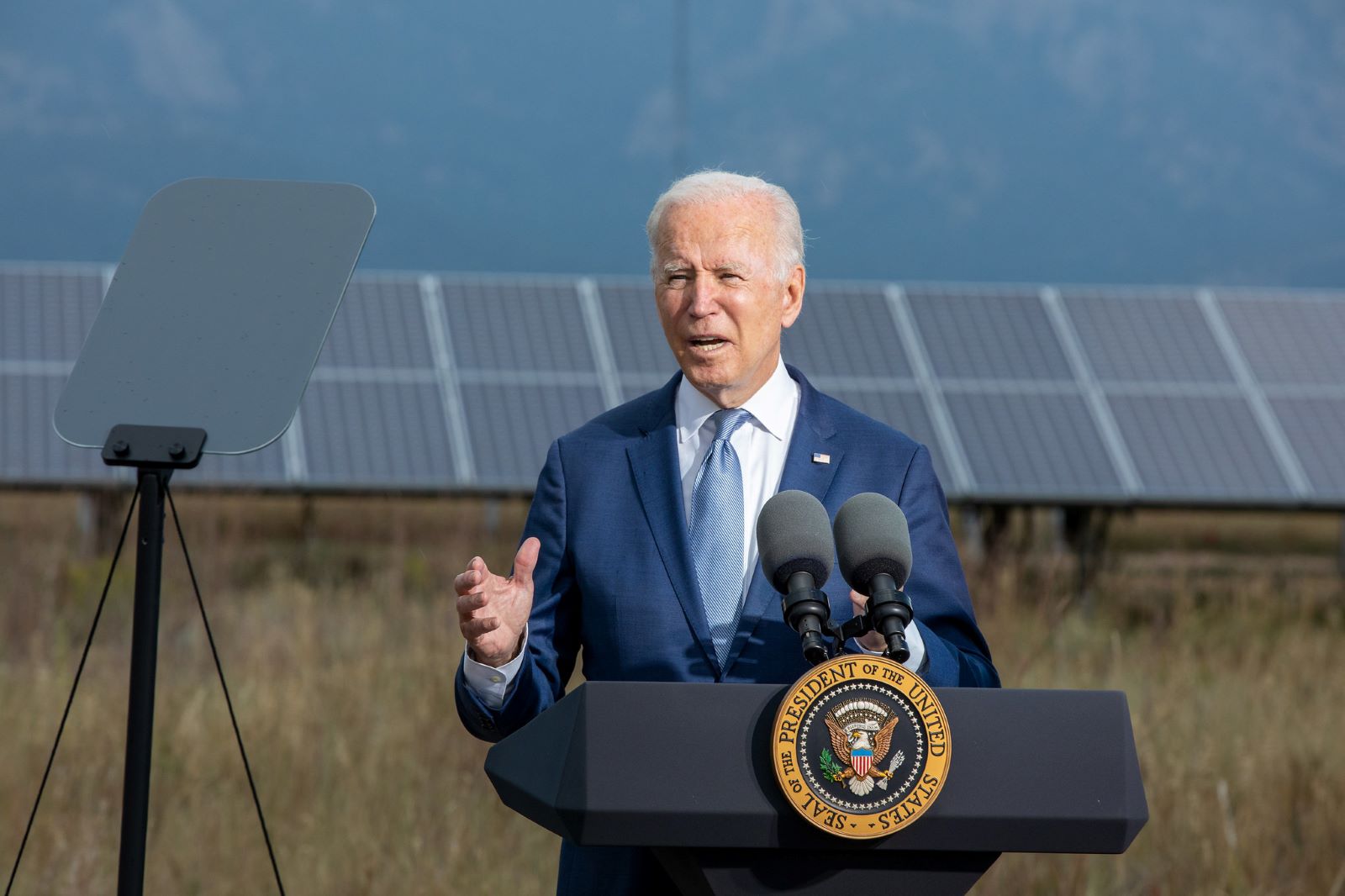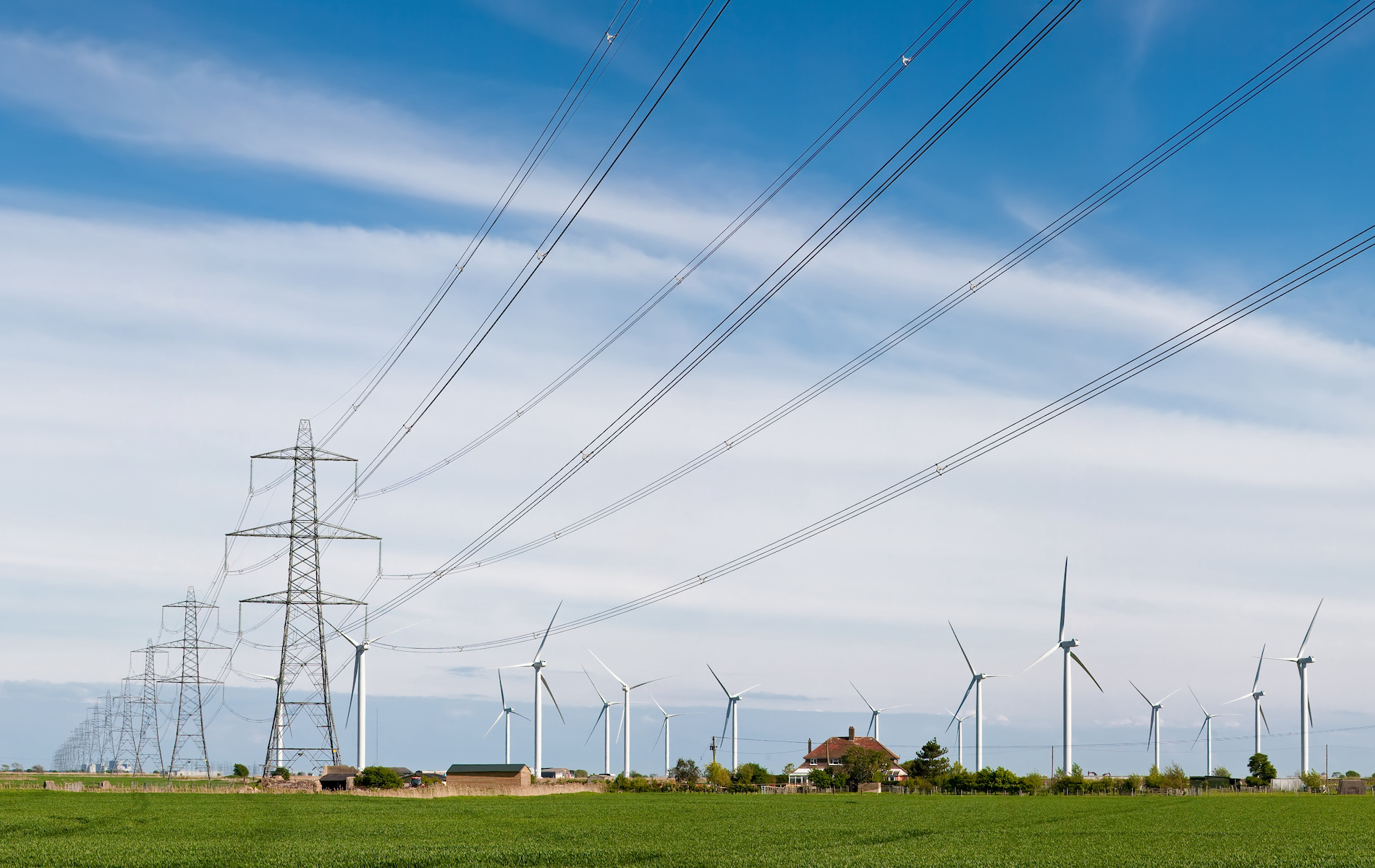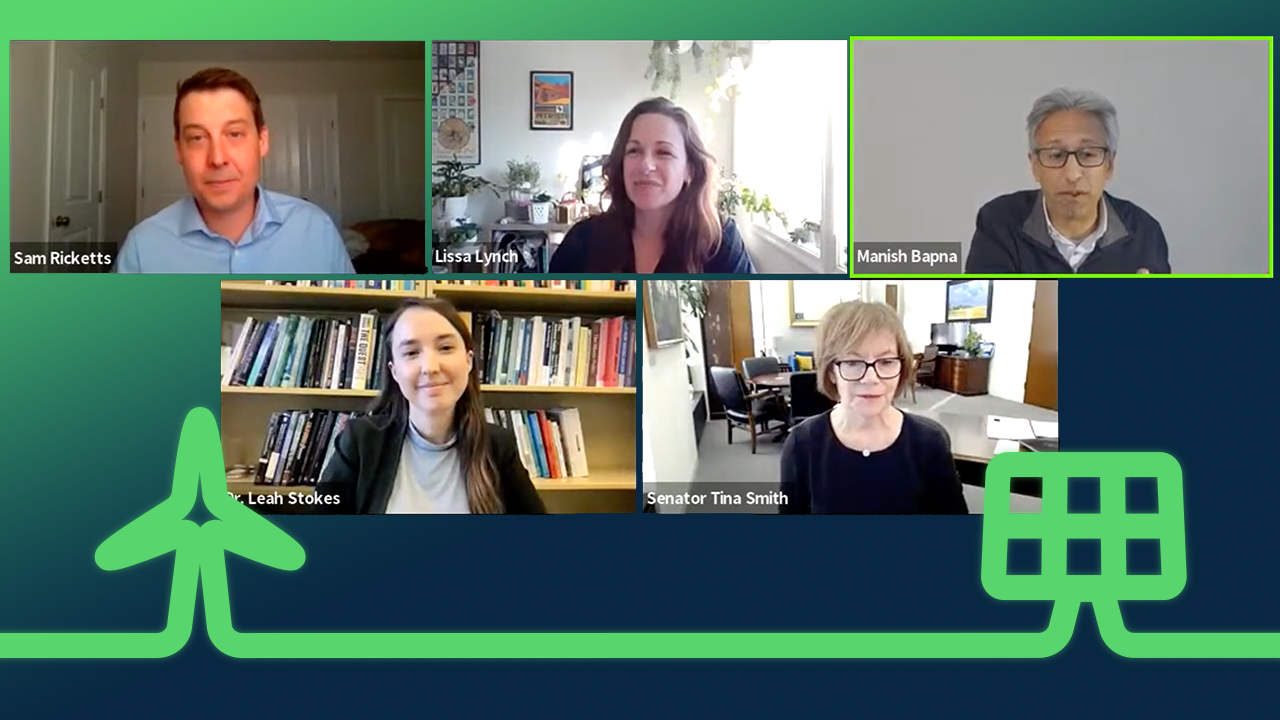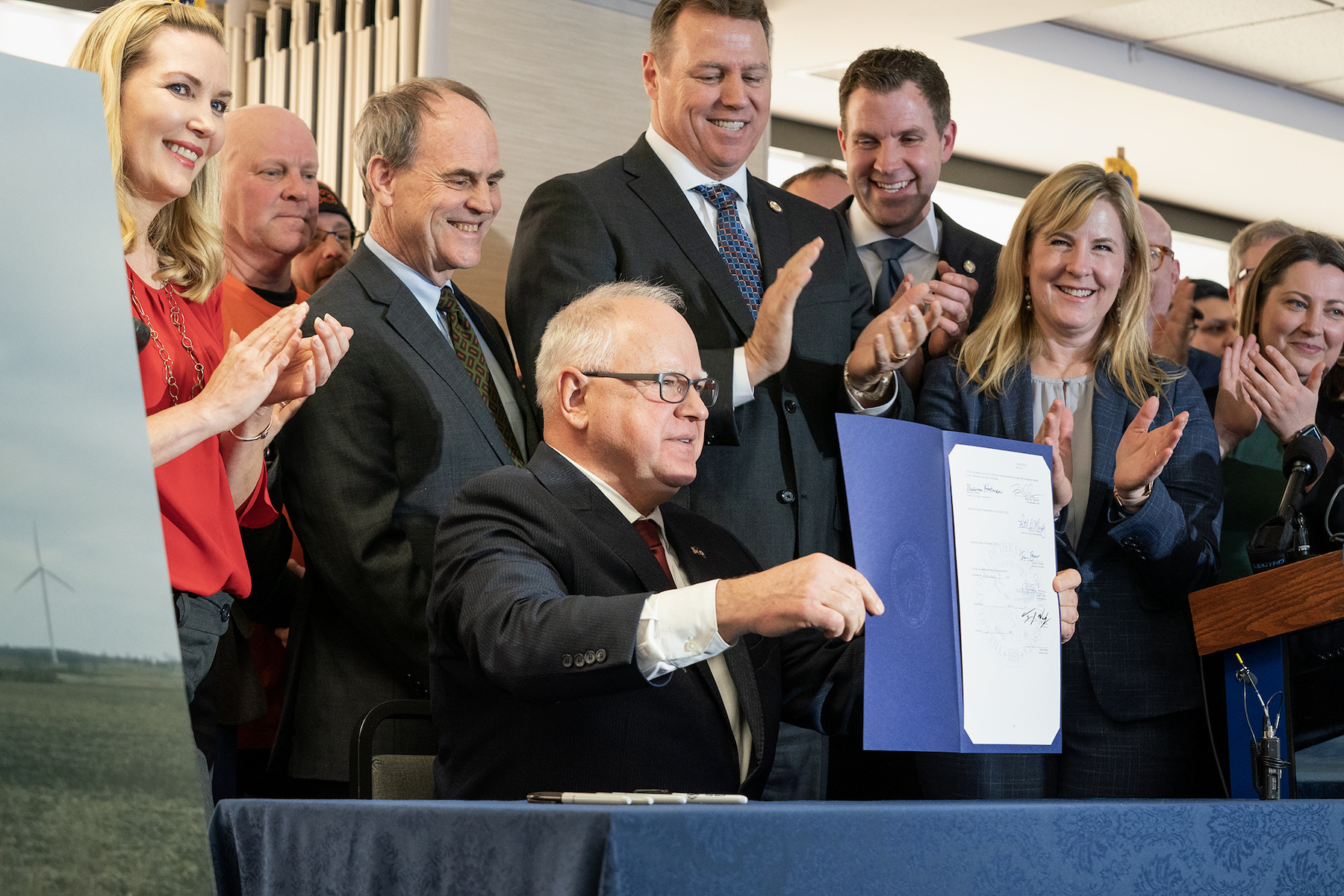On the campaign trail, then-candidate Joe Biden made a promise to the American people: The United States would achieve 100 percent clean, carbon pollution-free electricity by 2035. Accomplishing this goal is the key to cutting carbon pollution across the entire economy, improving public health, increasing equity, creating good clean energy jobs, and tackling climate change. Cleaning up the electricity sector unleashes a powerful domino effect that decarbonizes other sectors of our economy. Powering our grid with clean energy, instead of dirty fossil fuels, will allow us to decarbonize our homes, buildings, cars, and more, by electrifying them. That means clean electricity could cut up to 75 percent of our total carbon pollution in the U.S.
So, how do we get there? Passing the Inflation Reduction Act (IRA) was a historic step forward, but it still doesn’t get us all the way. New modeling, done in collaboration with NRDC, projects that the IRA investments could increase carbon-free electricity in the US to 66 percent clean power by 2030–still 14 percent shy of the 80 percent target consistent with the path to 100 percent clean electricity by 2035. Hitting this goal requires more than just executive action–it demands a whole-of-government approach.
Furthermore, much of those emissions reductions will be impossible without additional action to expand the transmission lines necessary to connect new clean energy projects. To achieve these reductions, we need to dramatically improve how clean energy gets connected to, and transmitted through, our electrical grid. That’s where the Federal Energy Regulatory Commission (FERC) comes in.
The Federal Power Act provides FERC with the authority to level the playing field for clean electricity in wholesale power markets and to expand and reform our grid to ensure clean energy can get to customers. But right now, inadequate transmission infrastructure is holding back hundreds of gigawatts of wind, solar, and storage across the U.S., stalling the transition to clean energy. And now that the IRA has made wind and solar the cheapest source of new power in the country, it’s up to FERC to modernize our grid so consumers have access to energy that’s both affordable and reliable.
FERC must exercise its regulatory authority to reform planning in two key areas: transmission and interconnection, and resource adequacy. We break it down in our paper with NRDC, “Powering Toward 100 Percent Clean Power by 2035.” Check out the excerpt below.
